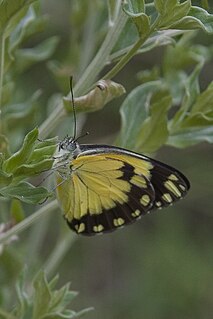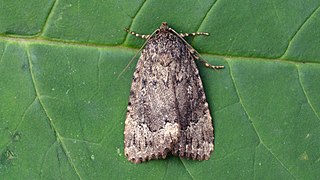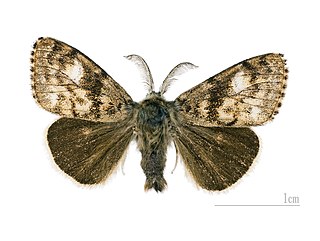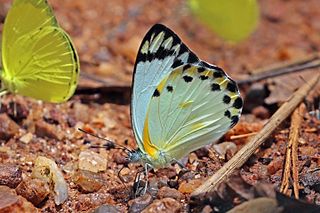
Frederick Seitz was an American physicist and a pioneer of solid state physics.

The hard palate is a thin horizontal bony plate made up of two bones of the facial skeleton, located in the roof of the mouth. The bones are the palatine process of the maxilla and the horizontal plate of palatine bone. The hard palate spans the alveolar arch formed by the alveolar process that holds the upper teeth.

Svensson's copper underwing is a moth of the family Noctuidae. The species was first described by Charles E. Rungs in 1949. It is distributed throughout Europe including Russia east to the Urals.

The mouse moth is a moth of the family Noctuidae. It is a widespread species with a Holarctic distribution.

Amphipyra is a genus of moths. It is the only genus remaining in the subfamily Amphipyrinae, the others having been removed, e.g., to the Hadeninae.

Friedrich Joseph Adalbert Seitz, was a German physician and entomologist who specialised in Lepidoptera. He was a director of the Frankfurt zoo from 1893 to 1908 and is best known for editing the multivolume reference on the butterflies and larger moths of the world Die Gross-Schmetterlinge der Erde which continued after his death.

Morpho rhetenor, the Rhetenor blue morpho, is a Neotropical butterfly of the family Nymphalidae. It is found in Suriname, French Guiana, Brazil, Peru, Ecuador, Colombia, and Venezuela.

Belenois creona, the African common white or African caper, is a butterfly in the family Pieridae. It is found in the Afrotropical realm.

Amphipyra pyramidoides, the copper underwing, is a moth in the family Noctuidae. It is found in the US and southern Canada.

Gynaephora is a genus of "tussock moths", also known as the Lymantriinae, within the family Erebidae. They are mainly found in the Holarctic in alpine, Arctic and Subarctic regions, and are best known for their unusually long larval development period. The life-cycle of Gynaephora groenlandica was once believed to take fourteen years, but subsequent studies reduced it to seven, still a very slow development rate that is extremely rare in the Lepidoptera. The caterpillars have five instars, with each instar lasting a year.
Lachana is a genus of moths in the subfamily Lymantriinae. The genus was described by Frederic Moore in 1888. It contains species native to alpine areas on high mountains in the south of the Central Asia. The females do not have wings and lay their eggs within their own old cocoons.

Amphipyra glabella, the grey amphipyra or smooth amphipyra, is a moth in the family Noctuidae. The species was first described by Herbert Knowles Morrison in 1874. It is found in North America from New York and Quebec west to southern British Columbia, south to Georgia and Colorado.

Afrodryas leda, the autumn leaf vagrant or orange-and-lemon, is a butterfly of the family Pieridae. It is found throughout Africa.

Belenois thysa, the false dotted border, is a butterfly of the family Pieridae. It is found in Africa.

Appias sabina, the Sabine albatross or albatross white, is a butterfly of the family Pieridae. It is found in Africa. The habitat consists of forests.

Mylothris agathina, the eastern dotted border or common dotted border, is a butterfly of the family Pieridae, which is native to sub-Saharan Africa, particularly East and southern Africa. In South Africa its range has spread westwards around the coast in the late 20th century, and it now occurs north of Cape Town to somewhat beyond Saldanha.

Parides panares, the wedge-spotted cattleheart, is a species of butterfly in the family Papilionidae native to the Americas. The larvae feed on Aristolochia maxima and A. pilosa.
Lachana alpherakii is a species of moth of the subfamily Lymantriinae first described by Grigory Grum-Grshimailo in 1891. It is found in the high mountains of Tibet and China.

Belenois solilucis, the yellow caper white, is a butterfly in the family Pieridae. It is found in Nigeria, Cameroon, Gabon, Angola, the Central African Republic, the Democratic Republic of the Congo, Uganda, Sudan, Ethiopia, Kenya and Tanzania. The habitat consists of lowland to sub-montane forests.

Belenois theora, the forest caper white, is a butterfly in the family Pieridae. It is found in Guinea, Liberia, Ivory Coast, Ghana, Togo, Benin, Nigeria, Cameroon, the Central African Republic, the Democratic Republic of the Congo, Uganda, Sudan and Tanzania. The habitat consists of woodland and forest margins.


















